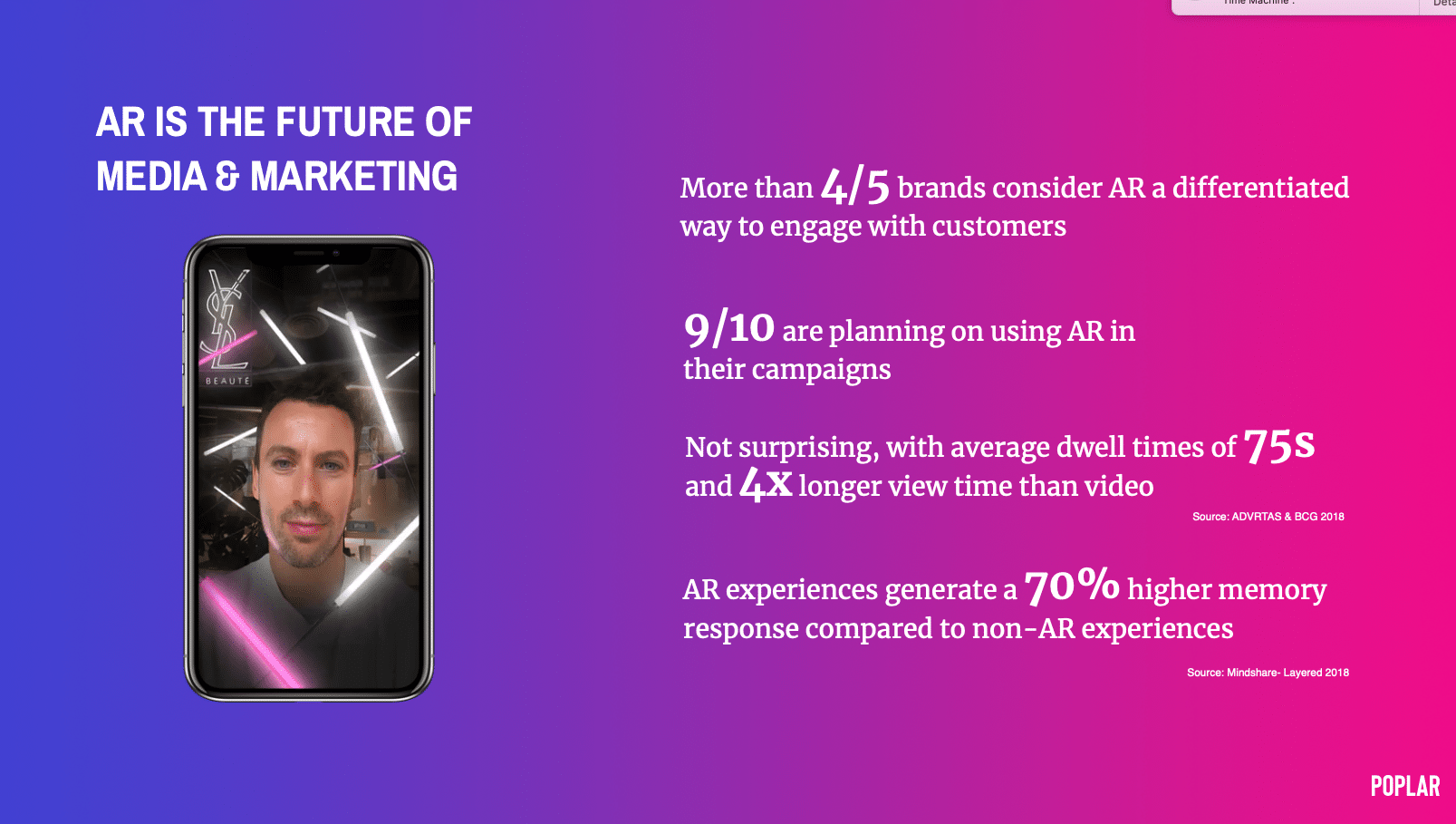
Data Point of the Week is AR Insider’s dive into the latest spatial computing figures. It includes data points, along with narrative insights and takeaways. For an indexed collection of data and reports, subscribe to ARtillery Pro.
Proof points continue to roll out for AR’s levels of user engagement. The latest is a pair of corroborating data points that validate dwell times for AR lens-based experiences. The first comes from Blippar, which reports session lengths that are 75 seconds on average across campaigns.
The second comes from AR ad-focused startup Poplar. Quoting data from interactive ad tech provider ADVRTAS during a presentation at AWE Europe, Poplar’s David Ripert likewise reports 75 second average dwell times for AR lenses. This is notably 4x longer than mobile video.

This joins similar figures we reported recently from 8th Wall which indicated that 80 percent of Web AR lens experiences drove session lengths exceeding one minutes. Beyond session length, there’s also frequency, considering that Snapchat users engage lenses 30 times per day.
These figures are more powerful than often-cited vanity metrics like download volume. Granular usage data like dwell times and frequency will be required to get advertisers on board. Of course the ultimate metric is brand revenue lift, which we’re seeing from Facebook among others.
As we’ve mentioned in similar contexts, these proof points for AR engagement and revenue are critical for market education. There’s still a bit of a disconnect on Madison Avenue about AR’s ability to drive ROI. So continued validation, per the above, is the name of the game.
As we outlined in an XRDC presentation, this disconnect is evident when AR engagement metrics and ROI analysis are at odds with advertiser survey sentiments that they aren’t seeing it. It doesn’t matter if AR ads work if the people writing the checks aren’t sold on the value proposition.
The above assertion may seem strange when all we hear about in AR industry rhetoric and conference presentations are glowing case studies and happy clients. It’s true that there are brands leaning into AR lens campaigns, but they represent a minority in the broader ad world.
The message to late adopters is to avoid the fate of their forbears who were late to the mobile advertising game. Those who jumped at mobile early conversely developed a competitive edge through competency and a head start. In other words, we’ve seen this movie before.
Of course, things get a lot more nuanced when we start to break down AR ad formats that will continue to develop. Just like other forms of digital advertising, these will hold different advantages for different types of products (e.g. front vs rear-facing camera activations) and campaign goals.
So that educational process will continue for years, just as brand education on effective mobile ad strategies continues to this day. Meanwhile, unearthing and examining AR proof points is our new obsession, per AR Insider’s new Ad Tracker series. Look out for lots more of that to come.
For deeper XR data and intelligence, join ARtillery PRO and subscribe to the free AR Insider Weekly newsletter.
Disclosure: AR Insider has no financial stake in the companies mentioned in this post, nor received payment for its production. Disclosure and ethics policy can be seen here.
Header Image Credit: Poplar
